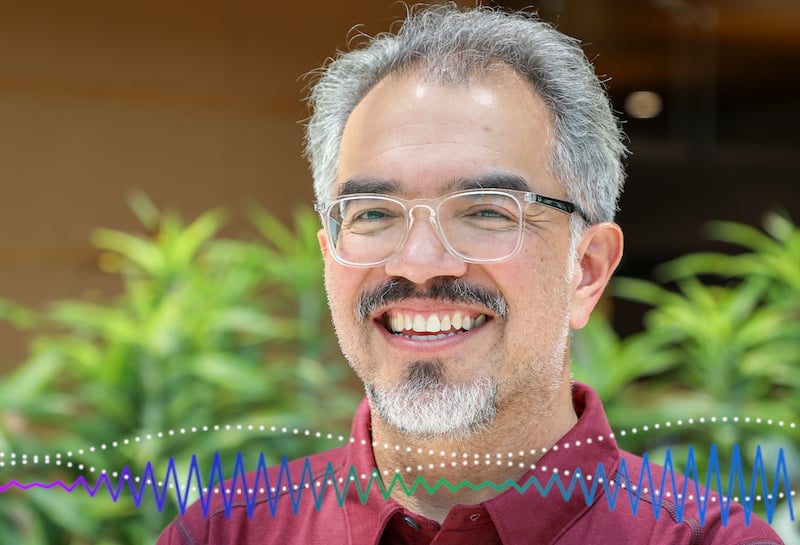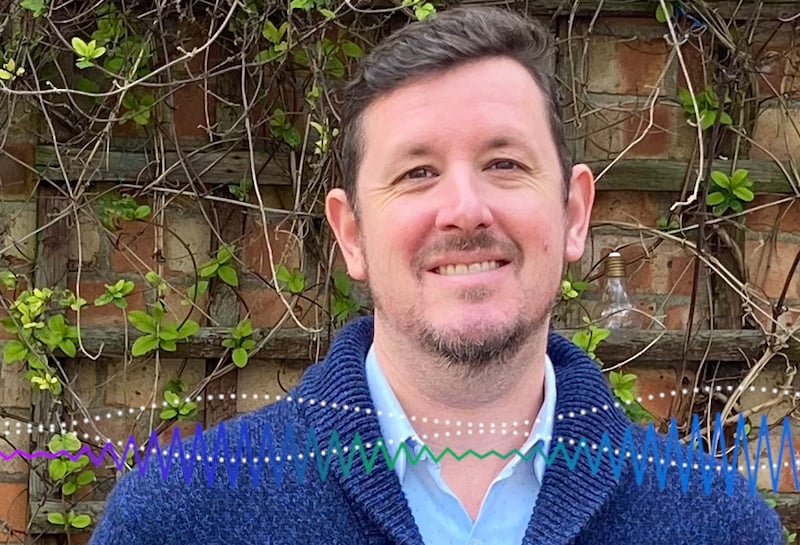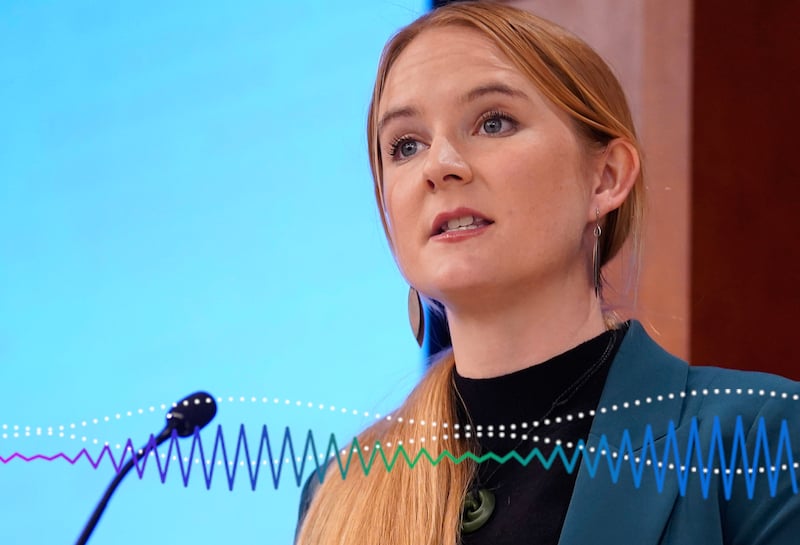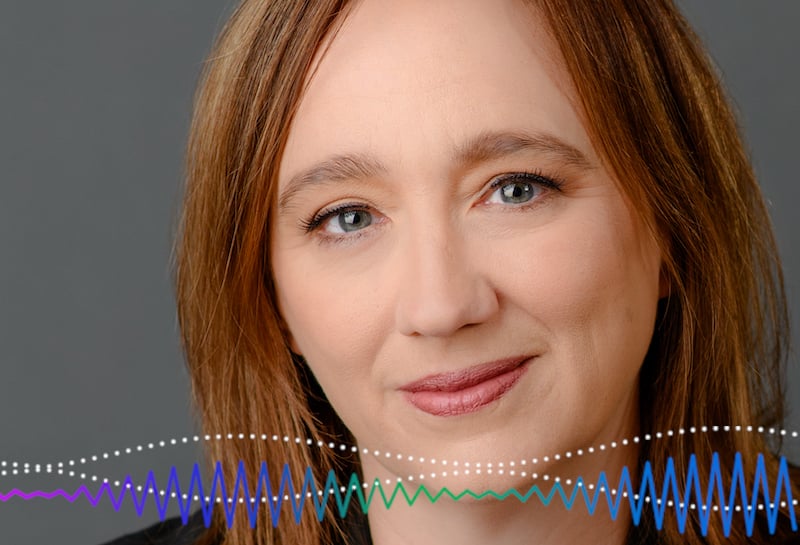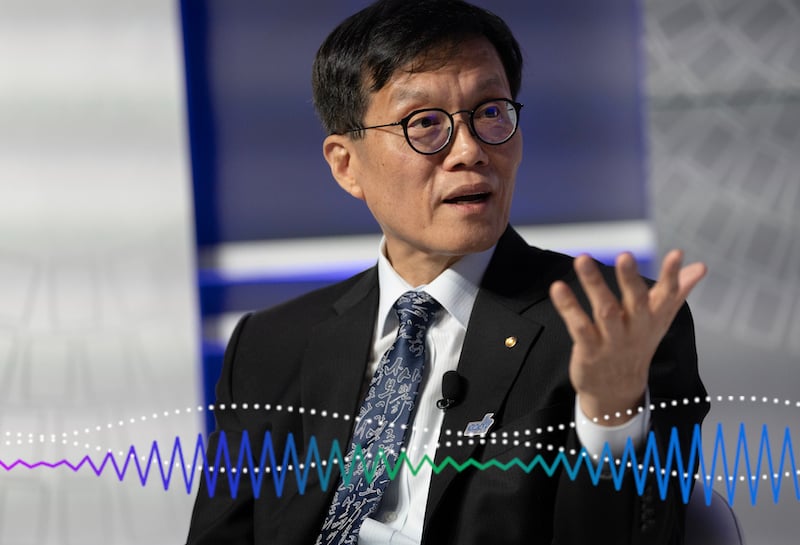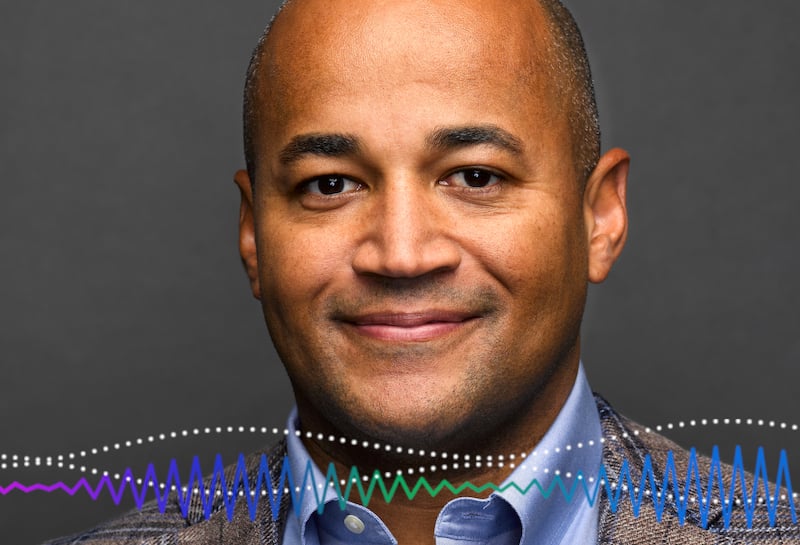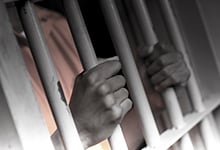
Losing Your Cool: How Hotter Days Can Increase Crime and Disrupt Economies
Weather shocks are increasing violent crime. (iStock by Getty Images/oneword)
In This Episode
Some economists would argue that extreme weather can increase criminal behavior by reducing incomes—especially in the agriculture sector. But in this podcast, economist Gordon McCord says the psychological effect of higher temperatures on violent behavior plays a prominent role. McCord is coauthor of a study that uses data from homicides in Mexico spanning 15 years, and considers the impact of a cash transfer program on reducing interpersonal violence on hot days. He presented his research at the 2018 American Economic Association’s Annual Meeting in Philadelphia.
Hello, I’m Bruce Edwards and welcome to this podcast produced by the International Monetary Fund. In this program: “Losing Your Cool,” a new study that looks at how climate change can affect crime rates and disrupt economies.
MR. McCORD [soundbite]: So, on a hot day, what happens to the probability of a homicide occurring at that location, and how does that compare to a hot day that occurred in the growing season preceding the observation?
MR. EDWARDS: While some would argue that extreme weather increases criminal behavior by reducing incomes, especially in agriculture, the economist Gordon McCord says the psychological effect of higher temperatures on aggressive behavior plays a prominent role. McCord is an assistant professor at the School of Global Policy and Strategy at the University of California in San Diego. He presented his research at the American Economic Association’s annual meeting in Philadelphia earlier this year. The study uses data from homicides in Mexico spanning 15 years in more than 2,000 municipalities, and considers the impact of cash transfers to reduce interpersonal violence on hot days.
So, we talk a lot here about weather shocks in the context of harvest and how they might affect inflation; and the cost of increasing natural disasters; and so on, but your research looks, specifically, at the link between crime and extreme weather. Why should economists care about crime rates?
MR. McCORD: Well, there are a few things I’d say about that. The first is that conflict is still a phenomenon that’s widespread around the world, not only intergroup conflicts, but also interpersonal conflicts. For an American audience, for example, in the US we have over 2 million violent episodes per year that include assaults, rapes, murder, so, this is a widespread phenomenon that generates harm to human beings, and if economics has something to say about it, then I think economists should care. And it turns out that we have cared.
Since 1968, Gary Becker provided us with a rational framework with which to think about criminal behavior and the trade-off between engaging in crime and not engaging in crime in a rational model. And, so, we have had a lot to say as a field on optimal policy in reducing crime whether through punishment, or whether through investing in policing, as with the foundation of this rational model that Gary Becker provided for us. So, the first thing I would say is that we have cared for a very long time.
The second, for the development folks, is that we know that conflict has had a lot to do with the process of both economic and political development over the course of our history; and so, if countries are engaged in violent conflicts, a government is unable to really organize itself to provide large scale public investments because it might have entire parts of the country that it doesn’t have access to, for example; and it also hinders political development. So, countries that are in deep conflict really have trouble generating good and effective institutions.
And then, perhaps, more recently, is the environmental economics researchers working on the economics of climate change. There’s been this new literature that’s starting to come together quite nicely showing that environmental variation has an important role to play in changing the probabilities of both interpersonal and intergroup conflict; and if we care about, for example, understanding the total social cost of carbon, then one of the things we should be taking account—together with rising sea levels; together with changes in infectious disease; together with changes in agriculture productivity as a function of climate change—well then, we should understand the economic costs of changes in conflict probabilities as a function of changes in our global climate.
MR. EDWARDS: So, do warmer temperatures mean more crime?
MR. McCORD: Well, I think that there’s strong evidence that the answer to that question is yes. We’re definitely seeing that environmental shocks—and that includes increases in temperature, as well as changes in precipitation—lead to all sorts of changes that are measurable in conflict probabilities along all three dimensions.
The first is what they call intrapersonal crime: this is suicide—there’s increased evidence that suicides are increasing when there are weather shocks. Second—and this is where my work falls—is the intrapersonal violence, such as two human beings engaging in violent confrontation; and third, in intergroup violence, which is all the literature on civil wars and war outbreak as a function of changes in weather.
And there are lots of reasons for economists to think that this is the case. We can imagine all sorts of channels through which climate variability would affect conflict through economic channels. The first is: it might change the supply of a natural resource like water availability, or total amount of food crops grown; changes in agricultural productivities that then change incomes, which might push populations into increased desperation; it might change food prices in the general equilibrium sense, and that may lead to increased desperation and to conflict; it might lead to migration and displacement of populations due to the untenability of a certain lifestyle in a place where the climate has changed, that then pushes people over to other places; and you’ve now got two groups that were previously separated now in the same place fighting over scarce resources, fighting over labor markets; it might lead to political grievances if governments can’t cope with these kinds of climatic changes in a way that’s satisfactory to the hurt populations, and that may just lead to conflict with the government. So, there’re all sorts of economic channels through which one might imagine this kind of variation in climate leading to conflict.
MR. EDWARDS: But, do you think this increase stems from the psychological effects of really hot days or is this simply about how the climate is changing; the economy, as you say, there might be a lack of resources here and there that leads to higher levels of frustration. How much do psychological effects play into higher crime rates?
MR. McCORD: Yeah; thanks for asking that. That’s what I’m most excited about in the work that we're doing is that for the first time we've got data that's at high enough temporal resolution. We're looking at the universe of homicides through the death certificates in Mexico from 1998 through 2012; and so, we’re able to look at daily weather variation and daily homicides; and so, look at the quantitative impact of contemporaneous changes in temperature; and that may be occurring through something that I’ll lump as the same day affect.
The first of these may be something that psychology has been pointing out for a long time that is, that the physiology of the brain may be changing at higher temperatures and we’ve just become impatient. Lots of evidence—from road rage in the United States to brawls breaking out at stadiums during sporting events; to experiments done in a laboratory setting, having people play patience games in rooms of different temperatures—all of them leading to the conclusion that we become less patient and more irritable and more aggressive at higher temperatures.
But that’s not the only mechanism through which heat may affect our behavior today. We may all just choose to have an extra beer, or two, or three if it’s very hot, and that alcohol might lead to violent confrontation. Or, we may all just decide that on nice days we like being outside more often; and even if interpersonal conflict occurs—the probability P—the more of us that are outside, the more conflict there is going to be quantitatively just as more people are interacting out there.
And so, there’s all those potential channels going on in terms of the same day or the contemporaneous affect now measured at the daily level, as opposed to all the mechanisms that economics and the economics literature has concentrated on that really operate through an income channel of sorts. And what’s nice about having this rich daily data from the Mexican context, is that we’re down at the sub-municipal level—what they call “the locality”—we’re got 19,000 localities in Mexico and daily data spanning 14 years—and we can start teasing apart: okay, on a hot day, what happens to the probability of a homicide occurring at that location, and how does that compare to a hot day that occurred in the growing season preceding the observation? And their horse raced directly: how does an income channel versus same day channel affect homicides? And to answer your question, it seems to be the case not only that both are important in that they’re both showing a statistically significant signal as we look at all these data, but that their magnitudes are comparable. And so, as you look at the total affect, and think about the total effect of a hotter planet on interpersonal violence, we would say that about half of it seems to be occurring through an income channel, and about half of it seems to be occurring through the same day channel that I mentioned earlier.
MR. EDWARDS: That’s so interesting. You also make this link between rainfall and violence within the labor force working in agriculture. Talk to me a little bit about how that works; and is there a measurable impact on productivity in the agriculture sector?
MR. McCORD: Well, so this is, I think, where this literature on the econ-side really started. Ted McGill wrote a seminal paper about10 years ago on rainfall and conflicts in Africa, and the channel he had in mind really is that when the rains fail, you’ve got a negative income shock on a population. And, just following the logic of the Becker model, where people’s opportunity costs of engaging in crime has gone down by a lot because of failures of agricultural production, or just desperation—you know we all need to satiate our nutritional needs—and if you’ve got massive crop failures then people have to, in desperation, go and secure those needs elsewhere, perhaps by force. So, whatever the story may be, rainfall is really where people started thinking about how changes in incomes in these kinds of context might affect the probability of violence breaking out.
What we find is that it’s operating both in the same day and over the growing season, exactly as you would predict. So, first of all, when you’ve got good rains, in the growing season over the subsequent year you’ve got a significant decline in the likelihood of homicides on any given day. So, that would suggest that with good rains, the yields in agricultural production go up—the agricultural productivity, the labor productivity goes up; perhaps even agricultural employment goes up—we don’t have data to measure those things—but it’s consistent with that kind of story, that is, decreasing conflict.
On the same day, there’s also a strong negative signal in terms of more rain leading to a decreased likelihood of homicides, and that may just be a mechanical story—or part of the story that I mentioned earlier about people going outside and interacting, and that leading to conflict. When it’s rainy, people go outside less frequently, or they avoid being outside and that leads to a strong negative affect on the likelihood of homicides occurring.
MR. EDWARDS: So, can we apply your research to the broader global implications of climate change? That is, should we expect to see a rise in human conflict as temperatures rise; and what should we be doing to mitigate some of these risks?
MR. McCORD: I think that this contributes to the literature that's trying to put bounds on what that relationship would be under a climate future; and several things are apparent from that literature overall. First is, you’d say, well, aren’t we all just going to adapt to a world that's warmer, and won’t we undergo behavioral changes or physical capital investments that will attenuate the negative affect that a climate change might have on us? The first thing is that there’s very little evidence of that, for two reasons:
First, you look at longer changes in climate and whether that has a smaller effect on conflict. The answer seems to be no, suggesting an absence of adaptation. Also, you might say, well, do we find the same relationship in parts of the globe that are warmer? For instance, people living in a place that’s always warmer should be better at dealing with hot episodes; and the answer also seems to be that the quantitative measure of the effect of temperature on conflict seems to be the same in warmer places than in less warm places. So, there is some, but very little evidence, for adaptation. We haven’t been able to adapt a way around this problem in the past.
Now, this particular paper adds this new interesting angle by trying to disentangle the same day affect versus the income channel affect. Well then, now you’re starting to ask the question, all right, so, what might be the potential policy implications or personal implications vis-a-vis changing your behavior or investing in air conditioners, for example? Which of these might have an effect that we observe in the data on reducing our exposure to this environment of vulnerability and the consequences in terms of climate outbreaks? I think that’s where the literature is going; that’s certainly what we’re looking at.
The final part of our paper is to look at the rollout of Mexico’s conditional cash transfer program, which is called PROGRESA, and there’s a nice regression discontinuity design that’s possible when looking at the rollout of this large scale conditional cash transfer program because the localities that received it in those first few years were eligible according to a marginalization metric that’s calculated at the locality level and at threshold. So, we can look at localities just below and just above that threshold, and then watch to see whether as the conditional cash transfer program comes in, those localities that did receive it at scale, exhibit any attenuation of the affect that high temperatures have on homicides.
MR. EDWARDS: But, what would they be doing with the cash transfer that would have an effect?
MR. McCORD: From our data, we can’t observe that; but you could certainly speculate a few different things: if they’ve got access to electricity, for example, they may be investing in a fan; they may have the financial wherewithal to not go to work on days that are particularly hot; or direct physical capital investments in clothing; in air conditioning; or in vehicles; any of these might be possible. We don’t have the data to exactly know which of these is at play, but the evidence that we’re seeing right now—although this is ongoing work—is that the localities that are just inside the eligibility seem to have a significantly smaller effective of temperature on that interpersonal violence; on that conflict.
And so, that suggests that these households are doing something with that income that is reducing their vulnerability to environmental variation. We don’t know what that is, and I think that’s the logical next question to start asking—not only from an adaptation point of view at the individual level, but for governments to want to ask the question, how do we optimally adapt to a changing climate.
MR. EDWARDS: That was Gordon McCord, Assistant Professor at the School of Global Policy and Strategy at the University of California in San Diego, talking about his research on the relationship between weather and human conflict.
If you like this podcast, subscribe on iTunes or on your favorite podcast app, just search for “IMF Podcasts”. You can now also follow us on Twitter: @IMF_podcast.
Join Us on Every Major Platform
Latest Podcasts
BEHIND THE MIC

Bruce Edwards
International Monetary Fund
Bruce Edwards produces the IMF podcast program. He's an award-winning audio producer and journalist who's covered armed conflicts, social unrest, and natural disasters from all corners of the world. He believes economists have an important role in solving the world's problems and aspires to showcase their research in every IMF podcast.

Rhoda Metcalfe
RHODA METCALFE is an independent journalist and audio producer.





